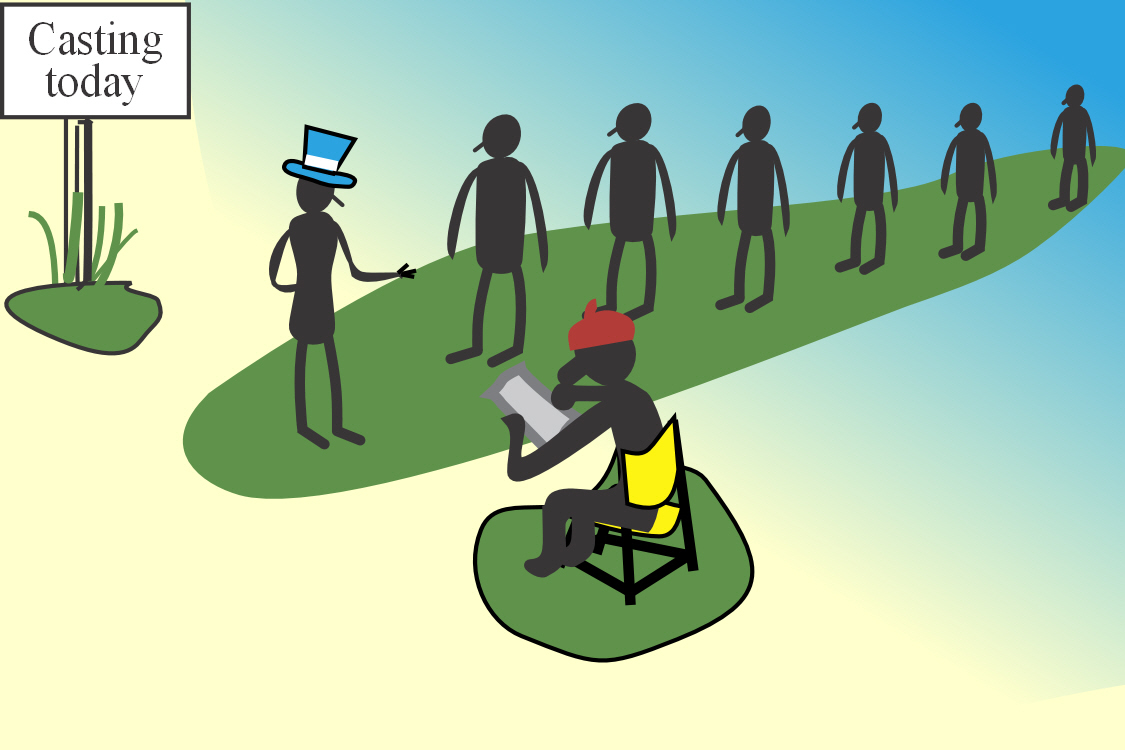|
Number 17 — January 21, 2005
Subjectivity, Objectivity & Perspective
· Previous · INDEX · Next ·
I noted previously some writers combine the Main Character and Protagonist. How does the author decide why and when to include a Main Character?
The Protagonist and Antagonist concentrate their efforts seeking, or avoiding, a solution to the story problem. That is, they have objective purposes. The Main Character plays a subjective role, and as a corollary, so does the Obstacle Character.
Objective means seeking something, physically or mentally—as a buried treasure, or a spiritual concept—and which at least one character considers attainable. Subjective means feelings arising because of the objective search.
Before I explore this idea, here is a list of the characters in Isaac's story.
- Main Character: Charles; young lawyer; wants to be a judge.
- Obstacle Character: Henry; wants Charles out of the office.
- Protagonist: Sydney, District Attorney; seeks to expose judicial crime.
- Guardian (Protagonist's ally): Ed, newspaper court reporter.
- Antagonist: Isaac Taber, contagonist's victim.
- Contagonist (Antagonist's ally): Abe, conniving political ward-healer.
Ed becomes suspicious of Isaac's rulings and relays his concern to the DA. This gives Sydney and Ed (good guys) a story problem exploring their suspicions. Abe promises Isaac (bad guys) a payoff for helping his friend the Mayor's political ambitions that provides a story problem they want to hide. These four have objective purposes.
Charles, aware of the maneuvering among the four characters, acts subjectively in a manner he judges to be in his best interests. He and Henry debate the issues with the latter always taking a position opposed to Charles.
These six characters allow the author to examine four story perspectives:
- All the events of the story that create the reader's perspective;
- The Main Character's subjective evaluation of the events;
- The Obstacle Character's subjective evaluation of the events;
- The argument between the Main and Obstacle Characters that eventually leads to one or the other changing one or more of his value dimensions.
Through exploring these four perspectives, the author examines the real world in fictional terms. The reader experiences the first perspective through watching all the characters from a distance and associating them with a role regardless of whether the reader can name the roles the characters fulfill. Think of the reader as a spectator at a sporting event, watching the players on the arena floor. He may not be able to name the positions the players occupy, but he is able to grasp the sense of the game. In contrast, the Main Character presents the subjective argument, supporting whatever theme the author selects, while the Obstacle Character entertains the opposite view. In the sporting analogy, these characters represent individual players on opposing teams concerned about their personal involvement, which is the subjective view of the game from the arena floor. This is not far from real life. Decisions often come through consideration of an alternative view, sometimes called the devil's advocate.
An author combining objective and subjective characters in the same body, consciously—or by default—takes the argument out of the story by removing perspectives 2, 3, and 4. Although nothing is wrong in such a choice, character analysis as a first step in story creation forces a conscious decision to include, or exclude, subjective characters.
To distill this diatribe to simple terms, the author's problem is a practical, easy-to-understand choice. Will he or she describe the battle of Sydney and Ed versus Isaac and Abe as action-driven lacking philosophical arguments, or will the story broaden to wider considerations? If Charles and Henry are absent, Isaac's story explores American judiciary without regard to its effects on others. With Charles and Henry in the story, it expands to include an argument about the effects of such improprieties as graft, duplicity and deception. Combining four principal characters makes the controversy multi-dimensional, which is not only more interesting for the reader, it is also more challenging for the author.
Will your story be a two-dimensional game like tic-tac-toe, or a three-dimensional challenge such as Rubik's Cube? The decision may be hard to make, but once taken, it should not be reversed.
· Previous · INDEX · Next ·
|

